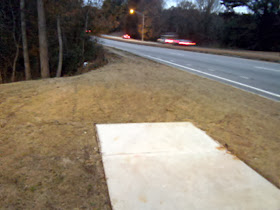Posted
by Faris Mousa, CLARKSTON, GA -- Clarkston is located in the metro Atlanta
area, approximately seven miles east of the city limits. Over the last two
decades or so it has increasingly become a haven for refugees mostly from
Southeast Asia, East Africa, and in and around the Middle East. During my
junior year in college I interned for a mentorship program at the local high
school and got to see the many challenges these hard working people and their
children endure on a daily basis. The
schools are not very good, the housing conditions atrocious, and access to
fresh food compromised. All of which has led increasingly poor health and
social issues.



My
mentee was a student Clarkston High School who had immigrated to the United
States with his family as a Kurdish refugee. The majority of the student there
were foreign born, many of whom were refugees. During my first week I noticed
how my mentee and many other refugee students were neglected by the teachers
and staff. For instance, the ESOL (English for Speakers of Other Languages)
program consisted of only one teacher who, ironically, only spoke English. This
did little to prepare the ESOL students for the regular school curriculum. In fact, the ESOL teacher would prematurely place
the refugee students in regular English curriculum courses for the sole purpose
of making room for the influx of new refugee students. How can a student do
well in an English curriculum track when they haven’t fully mastered the
English language? In short, limited language-based educational resources
combined with refugee student neglect minimized the chances of academic success.

The
majority of refugees in Clarkston are assigned to some sort of subsidized
private market housing by social workers during the relocation process. My
mentee lived in what appeared to me to be a slum-lord-run project-based Section
8 apartment complex called Toby Grant. The heating and cooling systems in the
apartment building didn’t work all the time; paint was peeling, mold common place
as well as pests. My young mentee lived with his large family in a relatively small
two bedroom and one bathroom apartment. Since the housing units were in such close
proximity to one another and had very thin walls, I could literally hear the
conversations in the adjacent units. Imagine having to live with not only your
own overcrowded place but your neighbors’ as well.

The
nearest full service supper market was almost five miles away. Though the
parking lot looked overcrowded with cars, most of the refugees did not have
access to an automobile. In fact, part of the reason for the crowded parking
was that there literally were few places to park. The car-less refugees typically
purchased there food at the over-priced convenient stores that were within
walking distance. Most of these stores do not sell fresh and healthy foods,
which is contributing to the increasingly poor health of the refugees.


This
is all happening as the refugee population of Clarkston continues to increase
without a matched expansion in needed services and amenities. But social
intervention programs, such as the mentorship program I was lucky enough to be
a part of are slowly defying the status quo in areas like Clarkston. Hopefully
such programs will continue to make head way into improving the educational and
social conditions. These refugees came to America in hopes of a brighter and
less oppressive future for themselves and their families. Hopefully we can work
to change more than just their addresses.
Faris Mousa is a graduating senior with
a major in Sociology at Georgia State University. He will graduate with honors
Tuesday, December 17, 2013. Good luck Faris! You can contact him at Fmousa1@student.gsu.edu.































